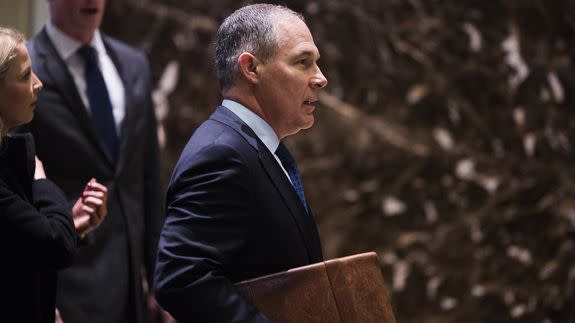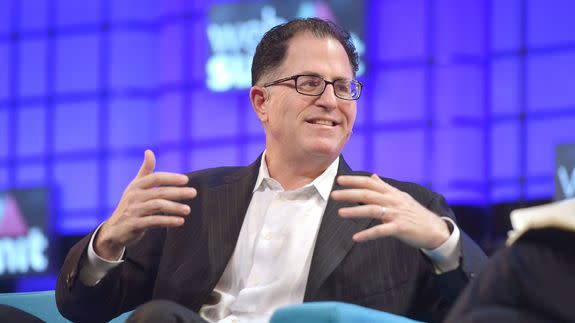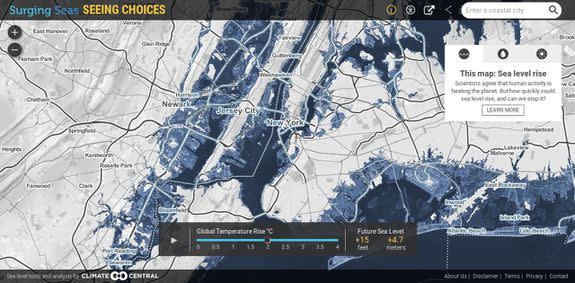The best climate messengers for Trump are people you've never heard of

In the past week, former vice president and prominent climate activist Al Gore, as well as actor and climate campaigner Leo DiCaprio, have met with President-elect Donald J. Trump to discuss global warming.
Trump is not listening.
Or, to put it more charitably, perhaps he is listening and then blatantly ignoring the advice he is receiving. Either way, something needs to change, fast, or else the Trump administration will be the most anti-environment U.S. government in modern times.
SEE ALSO: Trump's just-named EPA chief is a climate change denier
Here's where Gore and DiCaprio's interventions have gotten us.
On Wednesday, a day after the Gore meeting and the same day as the DiCaprio sit down, the Trump transition team announced the appointment of Oklahoma attorney general Scott Pruitt — one of the fiercest critics of the U.S. EPA's climate programs — to lead that agency.
Pruitt has a long record of casting doubt on mainstream climate science findings, including the connection between emissions of greenhouse gases and increasing global temperatures and weather extremes.
In addition to putting a climate denier atop the EPA, Trump will reportedly nominate two other anti-climate figures for prominent environmental positions in the cabinet: former Texas gov. Rick Perry to lead the Energy Department, and Oklahoma governor Mary Fallin at Interior.
Perry famously could not remember the existence of the Energy Department at a debate in 2011, when he was listing agencies he'd get rid of if elected president.
And Fallin has been a leading advocate of the oil and gas industry, despite the fact that oil and gas drilling techniques turned her state into the most earthquake-prone in the country.
Trump's own views on climate change are well-known, having called it a "hoax," but he has recently said he was "keeping an open mind" about some aspects of the issue and acknowledged that human activities are may be a role in warming the planet.
Business leaders, not environmentalists
Gore and DiCaprio are smart, committed activists. But they're not the best climate ambassadors to send into Trump Tower.

Image: Rex features/AP
Trump is a businessman. He understands balance sheets, returns on investment and risk. Therefore, the best people to turn him around on climate change and show him the tremendous economic costs of inaction are likely to be business leaders of major companies that see the value of tackling climate.
In the past decade companies as varied as Google, Ikea, Dell, GE, Microsoft, Facebook, Apple, Amazon, News Corp., Airbnb, LinkedIn, Staples, Mars, Kellog, WalMart and JetBlue have all committed to taking action on global warming and supporting U.S. efforts to do so at the international level.
Google, for example, announced this week that it will use 100 percent renewable power for all of its data centers and offices in 2017.
A major coalition of businesses helped provide crucial support to get the Paris Climate Agreement passed in December 2015. That agreement entered into force early last month. (Trump has vowed to pull the U.S. out of it.)
Businesses that traditionally have not been identified with the environmental movement have come to realize that there is tremendous cost savings to be had from making their operations more energy efficient.
A CEO-centric strategy
So send Doug McMillon, the CEO of WalMart, which is one of the biggest proponents of energy efficiency and users of solar energy in the country, to meet with him.

Image: APJason Ivester/The Arkansas Democrat-Gazette via AP
Or maybe Grant Reid, the CEO of Mars Inc. and Shira Goodman of Staples should head to Trump Tower together to talk about climate change with reference to the bottom line.
Of course, one could always go with a big name, like Apple CEO Tim Cook or Microsoft CEO Satya Nadella, but there's a perception that Silicon Valley heavily favored Democratic nominee Hillary Clinton during the race, which could make things awkward.
Focus: The huge risk associated with inaction
Studies published in the past two years have pegged the cost of inaction in the many billions, if not trillions, of dollars.
According to a 2014 report from the White House Council on Economic Advisors (CEA), the cost of hitting a specific warming reduction target increases, on average, by about 40 percent for each decade that action is delayed.

Image: Climate Central
This jump in price is due in part to the fact that delaying emissions cuts means that steeper reductions will be required at a later date to reach a given temperature target, compared to taking such steps now.
In addition, the CEA report found that emissions cuts made after the world warms by another 1.8 degrees Fahrenheit would cost the U.S. economy at least $150 billion more per year in "economic damages" from climate change.
Such extra costs would instead be money saved if emissions cuts were to take place now and prevent the climate from warming so much in the first place, the report said.
Another 2014 study, this one by a bipartisan group of business leaders and former political leaders, including President George W. Bush's treasury secretary, Henry Paulson Jr., found that extreme heat and sea level rise will threaten human health and put up to $3.5 billion in U.S. property in jeopardy by 2030, with even more severe and expensive impacts to come after that.
The report compared climate change impacts to a predatory loan assigned to future generations. The report stated:
Paulson, who was involved in the response to the 2008 financial crisis, said at the time that climate-related risks pose a "more perverse and more cruel" threat than that crisis did.
Plan B
Trump is about as far from a treehugger as they come, and he is unlikely to be moved by people like Gore and DiCaprio.
But once he learns what a risk climate change is to the bottom line of large companies that employ millions of people in the U.S., perhaps he'll listen.
If this approach fails, then it's truly time for climate activists to turn to Plan B: Fiercely determined resistance.
Sometimes 'puppet of industry' is a metaphor. Sometimes it's literal. Meet Scott Pruitt, new head of the EPA https://t.co/twWQTZv9KK
— Bill McKibben (@billmckibben) December 7, 2016
To some extent, that's already happening, judging from the statements that environmental groups have been putting out.
However, there's still a glimmer of hope for a climate change intervention, particularly if the right messenger is chosen.
That glimmer is fading by the day, however.
